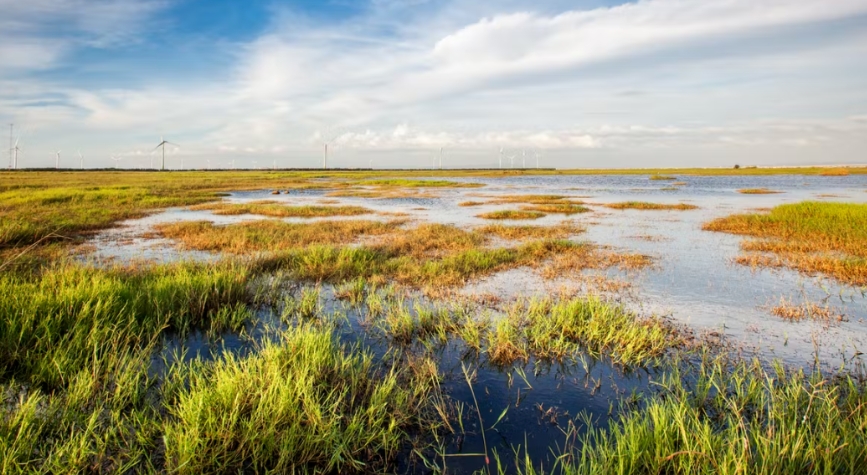
全球变化和人类行为正在导致全球潮汐湿地的快速变化,包括潮汐沼泽、红树林和潮滩。然而,生态系统恢复和自然过程在缓解这一现象上发挥着积极作用。
Global change and human actions are driving rapid changes to tidal wetlands - tidal marshes, mangroves and tidal flats - worldwide. However, ecosystem restoration and natural processes are playing a part in reducing total losses.
但由于各种变化因素给潮汐湿地带来的影响存在不确定性,难以在全球范围内预估其当前和未来的状态。
But efforts to estimate their current and future status at the global scale remain highly unclear due to uncertainty about how tidal wetlands respond to drivers of change.
在一项新研究中,研究人员对大量卫星图像档案进行了机器学习分析,以探寻1999 年至 2019 年间世界潮汐湿地变化的程度、时间和类型。
In a new study, researchers have developed a machine-learning analysis of vast archives of historical satellite images to detect the extent, timing and type of change across the world’s tidal wetlands between 1999 and 2019.
他们发现,在全球范围内,13,700 平方公里的潮汐湿地消失了,但被增加的 9,700 平方公里所抵消,导致20年内净减少 4,000 平方公里。
They found that globally, 13,700 square kilometres of tidal wetlands were lost, offset by gains of 9,700 square kilometres, leading to a net loss of 4,000 square kilometres over the two-decade period.
剑桥大学动物学系高级研究助理、该研究的合著者 Thomas Worthington 博士说:“保护我们的沿海湿地对于保障沿海地区和地球更广泛范围内的健康至关重要。这些地区是许多动植物的最后避难所。”
“Protecting our coastal wetlands is critical to supporting coastal communities and the wider health of the planet. These areas are the last refuge for many plants and animals,” said Dr Thomas Worthington, Senior Research Associate in the University of Cambridge’s Department of Zoology and co-author of the study.